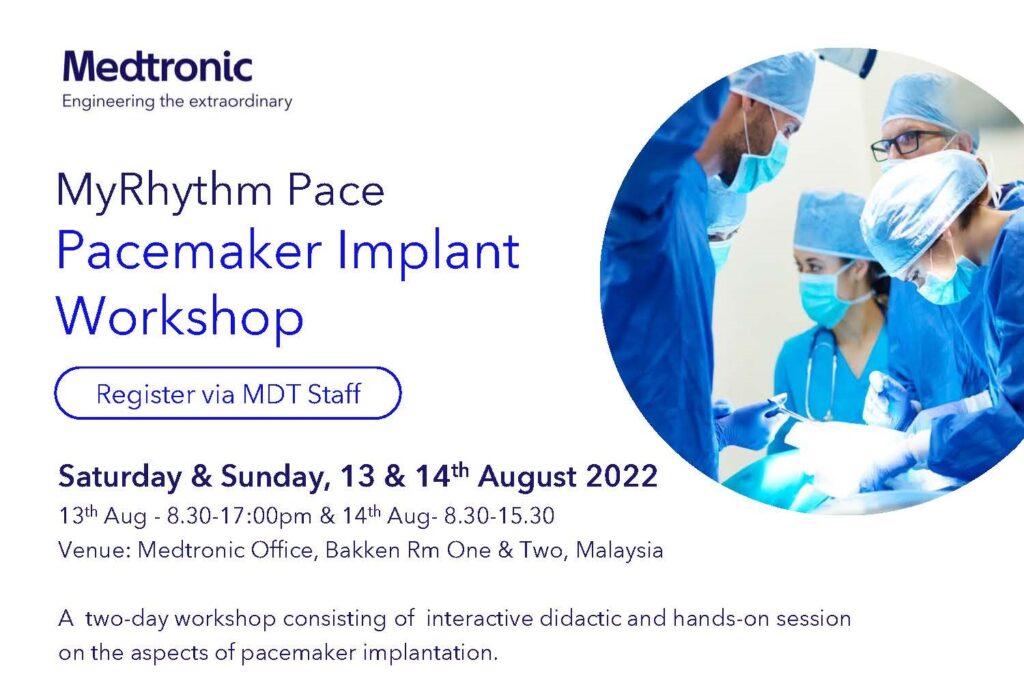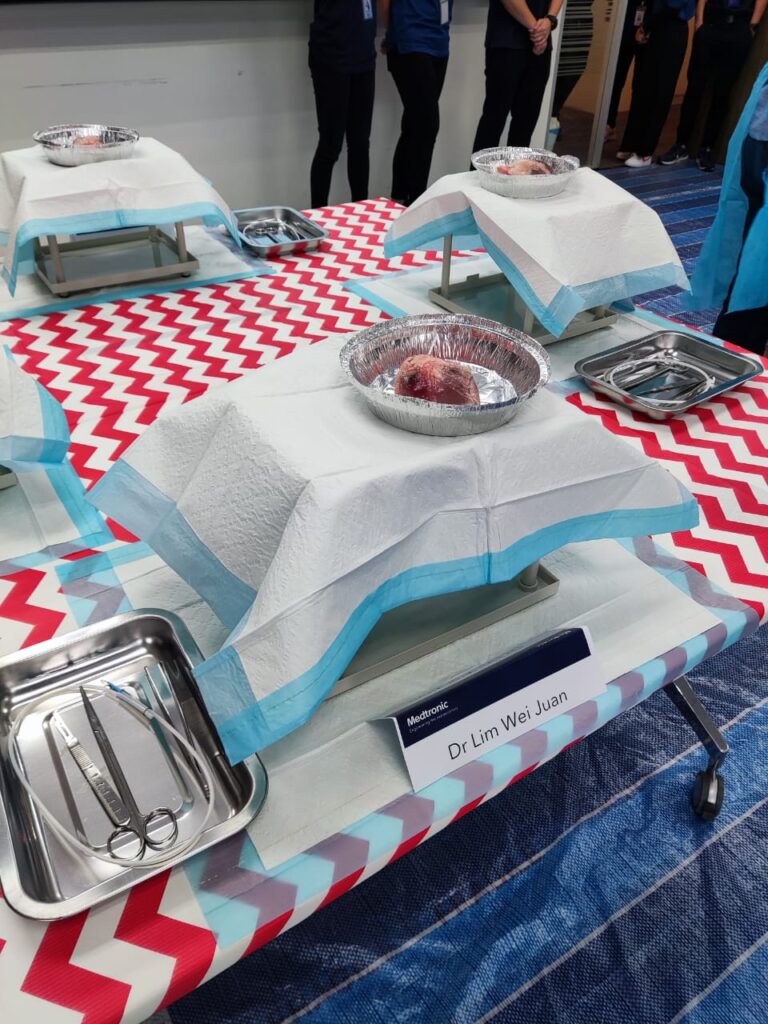It was thrill to attend Medtronic pacemaker workshop at their main office KL.
It was a 2 days workshop, where we have the chance to listen to lectures and hands-on dissecting and suturing pacemaker.

We also got the chance to “play” with a goat’s heart

Pacemakers are electronic devices that are implanted in the body to regulate the heartbeat. There are several types of pacemakers, including:
- Single-Chamber Pacemakers: These pacemakers have one lead (wire) that is implanted in the right atrium or right ventricle of the heart.
- Dual-Chamber Pacemakers: These pacemakers have two leads, one that is implanted in the right atrium and another in the right ventricle of the heart. This allows the pacemaker to coordinate the contractions of both chambers of the heart.
- Biventricular Pacemakers: Also known as cardiac resynchronization therapy (CRT) pacemakers, these devices have three leads that are implanted in the right atrium, right ventricle, and left ventricle of the heart. They are used to treat heart failure and improve the coordination of the heart’s contractions.
- Leadless Pacemakers: These pacemakers are smaller than traditional pacemakers and do not require leads. They are implanted directly into the heart and are used for patients who need a single-chamber pacemaker.
- MRI-Compatible Pacemakers: These pacemakers are designed to be safe for use during magnetic resonance imaging (MRI) scans, which are not recommended for patients with traditional pacemakers due to potential interference.
- Implantable Cardioverter-Defibrillator (ICD) Pacemakers: These pacemakers are used to treat life-threatening arrhythmias and can deliver a shock to the heart to restore a normal heartbeat. They have one or more leads that are implanted in the heart and are often combined with a pacemaker function.

1 thought on “Medtronic Pacemaker Workshop for Cardiology Fellow”
Comments are closed.